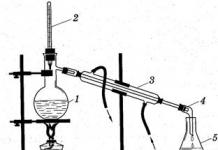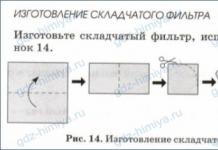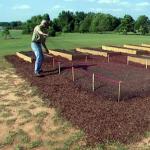First of all, you need to be able to choose the right material for roofing, hydro and thermal insulation. To date, the market is full of high-quality insulating roof insulation with excellent performance properties.
When choosing a material for insulation, you need to pay attention to the following points:
- the thickness of the heat-insulating layer: it should be at least 25 mm, and 10 cm is considered ideal;
- operational characteristics;
- material cost;
- resistance to climatic and mechanical damage.
In addition to the above, the configuration of the roof is also of great importance.
There are the following types of roofs:
- flat,
- pitched,
- tent,
- attic.
Mineral wool slabs, foam concrete, polystyrene foam and fiberglass slabs, polyurethane foam, foamed glass are considered especially popular materials for insulation.
Each of the heaters differs from the others in terms of environmental friendliness, thermal conductivity, water absorption, vapor permeability, and strength. The differences also apply to prices.
One of the most popular materials is mineral wool. Its popularity is due to its low thermal conductivity and ability to withstand high temperatures.
Mineral wool can be produced on the basis of different materials.
There are the following types of this material:
- based on basalt
- based on fiberglass
- Styrofoam,
- styrofoam,
- foam glass,
- cellulosic materials.
At its core, a warm roof is a special roof format with a layer of insulation embedded in it, thanks to which it perfectly retains moisture.
Mineral wool The first two types are a pretty good choice. But it should be remembered that the moisture-absorbing properties of fiberglass are not very high.
In addition, the use of wool implies additional costs for the installation of vapor and waterproofing protection both from the inside and outside.
Styrofoam is a cellular (foamed) mass of plastic. The density of this material is much lower than the density of the polymer (feedstock), since the main part of its volume is occupied by gas.
This causes sufficiently high sound and heat insulation properties of this material. The heat-insulating qualities of foam plastic are quite high, provided that the operating temperature of a particular type of material is not higher than the temperature of its destruction and loss of structure (destruction temperature).
Its advantages include non-toxicity. Certain types (polystyrene foam) are allowed even for contact with food. The lightness of foam makes it very convenient for use in construction.
Among the shortcomings of the material are the following:
- although the foam has sufficient resistance to the action of microorganisms and is unfavorable for the development of fungi and algae, its rough surface can create favorable conditions for fixing colonies of algae (microorganisms) on it;
- in addition, today, foam plastic is found on the building materials market, which, during use, under certain operating conditions, can harm both the consumer qualities of the building and the health of the people in it;
- the material is easy to process, but requires compliance with safety rules: a prerequisite is the performance of work in the open air or in rooms with good ventilation.
In the photo, the scheme of roof insulation with polystyrene foam: 1 - Drywall; 2 - Rafters; 3 - Extruded polystyrene foam; 4 - crate; 5 - Waterproofing.
Styrofoam boards are also an excellent choice as a material for insulation. One of their main advantages is the prevention of the formation of so-called cold bridges (due to which there is a heat leak).This is achieved thanks to special stepped or tenon-groove joints. The material also has very high moisture resistant properties. Its use allows you not to install additional protection against snow and rain.
In addition, expanded polystyrene is characterized by high strength and load-bearing capacity. Upon completion of the installation of insulating materials, you can get a holistic design that perfectly withstands high temperatures and stress.
Nowadays, extruded polystyrene foam is often used. This material is almost universal and is combined with any kind of work.
The price of insulating materials depends on their quality characteristics, density, size, thickness.
For example, a foam sheet measuring 100x100 cm, the density of which is 25, the thickness is 40 mm, costs 80 rubles; with a thickness of 50 mm, the price is 100 rubles; and if the sheet thickness is 100 mm, then the cost increases to 200 rubles.
In recent years, another heater has become popular - isover. Thanks to a special manufacturing technology, the fiberglass structure contains air, which causes its extremely low thermal conductivity.
One of the most important qualities glass wool– durability (service life can be 50 years or more). Its other advantage is that it practically does not burn and provides high vapor impermeability.
Together with heaters, materials for waterproofing are also used, the purpose of which is to protect against moisture. The most popular materials today are polyurethane, mastic, roofing material, etc.
Do you know what it is? All about its correct device and installation.
How to mount a hipped roof truss system is described in this. There you will also find a detailed video on this topic.
Important rules for insulation
- When insulating the roof, make sure that the insulation material does not cover the ventilation gap.
- When using a superdiffusion membrane, it is necessary to install materials for thermal insulation close to it.
- When using a conventional roofing film, gaps must be provided above and below the film.
- The joints of adjacent insulation boards must be staggered.
- The width of the seal must be greater than the distance between the rafters so that it fits snugly against the rafters.
- Attention should be paid to the tight fit of the heat-insulating plates to each other.
- When using mineral wool boards, a waterproofing material is also needed. Installation must be carried out with high quality, while joints will require special attention.
- If there is a large step between the rafters, the material should also be additionally fixed from the side of the room: screw self-tapping screws into the rafters, pull the wire between them.
- With a large cross section of the rafters, the insulation is placed between the beams and under them.
- Builders with extensive experience advise using two layers of 100 mm each, and not four layers of 50 mm, with a 200 mm insulation layer.

Preparing for insulation
The choice of a specific insulation is determined by the configuration of the roof.
Warming a conventional pitched roof will not cost as much as warming a hipped roof.
Speaking about the advantages of thermal roofing, it should be noted excellent sound and heat insulation and protection of the main coating from damage. This has an impact on the installation technique.
There are several important points that must be passed before starting work on roof insulation:
- roof detail check. If dampness, rotting or damage is found, they should be replaced;
- treatment of roof elements with an antiseptic;
- checking electrical wires, water supply and heating parts (if any under the roof).
roof insulation materials
The process of roof insulation also involves the choice of insulating materials.
The main ones are:
- polyethylene films,
- perforated,
- fabric reinforced,
- mesh reinforced.
Since the films are one-sided, when using them, you need to pay attention to which side they are laid on. Otherwise, you can achieve the opposite effect.
Errors in thermal insulation
Although at first glance, insulation seems to be an easy-to-implement process, some mistakes are possible when doing the work yourself.
Most often this concerns the wrong choice of material, its width. Insufficient width of the insulation causes the formation of cracks and low efficiency of building insulation.
Another mistake is the use of wet material, which leads to the formation of rust on metal elements, rotting of the structure of bulkheads, rafters and the appearance of an unpleasant odor in the under-roof space.
With a high humidity of the insulation, it will be impossible to avoid the penetration of water into the house.
The next mistake concerns the lack of hydro and vapor barrier. The layer of thermal insulation material must certainly be protected from the accumulation of water and moisture.
Therefore, moisture-proofing materials will be needed for the thermal insulation layer on the outside and protection of the under-roof space. From the side of the residential area, protection against the effects of water vapor is created using a vapor barrier.

Roof insulation process
The ideal choice for a pitched roof is slab or roll materials. They are laid between the rafters, on the crate.
During the insulation process, care must be taken to protect the insulation material from below (with a vapor barrier film) and from above (through the use of a sealing tape). A gap must be maintained between the roof covering and the insulation.
In addition to laying thermal insulation material between the rafters, you can use another method: lay them on the rafters. With the correct performance of the work, it is possible to provide not only heat, but also sound insulation of the building.
Pitched roof: features of insulation
Insulation of a pitched roof, under which it is assumed that there is a dwelling, has its own characteristics. At high humidity in the attic, it is recommended to use reinforced films, on one side of which foil is applied.
Special attention should be given to the junction of the ceiling and external walls. In these places, the insulation should adjoin the walls more tightly.
If there are cornices, it is necessary to take care of their insulation to prevent cold air from entering the under-roof space.
In difficult areas, a construction stapler is used to attach the film, which greatly facilitates the whole process. You can also use wooden slats.
Mansard roof insulation
The attic needs insulation more than other rooms, as it is not protected from the cold from the outside. In addition, it has a large area of interaction with the external environment.
With increased requirements for thermal insulation, the requirements for the quality of thermal insulation materials also increase. The most popular material for attic insulation is mineral wool.
A vapor barrier layer is placed on the inside of the insulation, and a waterproofing layer on the other. It is also necessary to provide space for ventilation in order to remove excess moisture and ventilate the room.
Taking into account the requirements for the quality of heat saving, when creating thermal insulation of the attic roof, it is advisable to use tiles or slate as a roofing material. Metal is better not to choose.

garage roof
In regions with a very cold climate, care must be taken to insulate the garage. Most often, glass wool is used for this, which is produced in rolls.
The width of the material in them for convenience corresponds to the rafter pitch. Glass wool has sufficient density, which is another plus.
If the bars are so wide that it is possible to make 50 mm holes in them between the insulation layer and the waterproofing material, then glass wool can be fixed between the rafters.
With insufficient thickness, the insulation is attached over the installed rafters. The final thickness of the layer of heat-insulating material will be 10 mm.
A vapor barrier must be installed over the glass wool to protect the garage from steam. Special bars are stuffed from above and the lining is laid. As a cladding, it is possible to use dry plaster, lining, drywall or other material.
The cost of insulation work
Prices for roof insulation may vary depending on the material, its thickness, type of roof.
You can refer to the following rates:
- external thermal insulation. The cost of spraying a square meter of material with a thickness of 2.5 cm, a density of 29-32 kg per square meter. m is 480 rubles per sq. m. With a thickness of 5 cm, the price of work increases to 750 rubles per square meter. m.;
- internal insulation. Spraying price 1 sq. m of material with a density of 9-12 kg per sq. m with a material thickness of 5 cm is 390 rubles per sq. m, 10 cm - 480 rubles, 15 cm - 720 rubles, 20 cm - 960 rubles.
Thus:
- an important point in the installation of the roof is its insulation;
- today's market offers a huge selection of insulation materials;
- when buying, you must consider the type of roof;
- it is also necessary to take care of hydro and vapor barrier;
- The cost of work depends on the quality characteristics of the selected material and the type of roofing.
Watch a video on how to properly insulate a roof:
Without high-quality thermal insulation at home, it will not be possible to save on heating in the winter. Walls and floors are not all ways through which heat leaves a living space. In addition to them, it is also necessary to insulate the roof.
Scheme of internal insulation
A kind of cake is a high-quality roof insulation from the inside, consisting in almost all cases of three main layers:
- Waterproofing
- thermal insulation
- vapor barrier
However, the basis of the entire structure is the truss system, which will act as a base link. Inside it is easiest to lay a heat-insulating layer.

Properly selected materials for each of the layers of the cake are the basis of high-quality insulation. The market is rich in various products, but you should not pay attention only to cheap options, preferring the golden mean.

The main purpose of the waterproofing layer is to protect the insulation from moisture from outside. It, accumulating inside it, destroys the structure of the material and renders it unusable. The task of the vapor barrier layer is to keep rising vapors out.

To protect against wet environments, special membrane or film materials are used. The permeability indicators of the former are better, but their market value is more expensive. Since it will not be possible to ensure complete sealing of the insulation, it is necessary to provide for ventilation gaps and seams.
Introductory video on the insulation of a pitched roof in a house
Choosing a thermal insulation material
Many manufacturers offer consumers a wide variety of heat insulators, each of which has positive and negative sides. Among all the performance characteristics, special attention is paid to the following:
- The level of moisture absorption - the lower this ability of the materials in question, the longer their service life can be expected
- Thermal conductivity - it should be as low as possible. However, this indicator is relative, since an increase in porosity and importance can significantly worsen it.
- Insulators with low density have much better thermal insulation performance.
Material selection video
Your attention should also be paid to such characteristics as environmental friendliness, chemical resistance, flammability and frost resistance.
The most widespread for roof insulation from the inside are mineral wool and glass wool. They have all the necessary characteristics and are relatively easy to use.

Expanded polystyrene is no less popular. In addition to high thermal insulation properties, it practically does not absorb moisture, is durable and tough, resistant to high temperatures and open fire. A significant disadvantage is the susceptibility to settling by rodents. That is why it has not received wide distribution.

Other, less common methods of internal insulation are also possible:
- The use of spraying is one of the most expensive methods, which is recommended to be entrusted to a professional master. If it is necessary to insulate an ordinary attic, and not - you should choose this method. Material costs will pay off with operational characteristics
- Insulation with liquid compositions (polyurethane foam or foam concrete) is not very popular, as it requires the use of specialized equipment for work

If thermal insulation of a classic attic space is necessary, an additional one is made above the ceiling (expanded clay, sawdust, sand, etc.).
Let's start warming the roof with our own hands
The most common case is the insulation of pitched roofs using rolled materials. First of all, you need to draw up instructions for yourself, following which you can count on a high quality result. Consider the case when the roof has not yet been laid.

First, you need to go through the attic again and make sure that all the components are in perfect order. If defects are found (rotting, cracks, etc.), they should be repaired immediately.

Sometimes various communication systems are laid on the roof: electrical wiring, heating, water supply, etc. They are also subject to thorough inspection and elimination of defects. Only after the establishment of order can proceed to further work.
The first step is to apply a waterproofing film to the outer surface. In order for it to fulfill its purpose, several rules must be considered:

- It is necessary to lay the film across, while at the joints an overlay of strips of about a meter is made, which is glued with adhesive tape
- It is necessary to select material for waterproofing only after purchasing a heater so that they match each other in terms of characteristics
- In no case should you pull it tightly over the surface. At sub-zero temperatures, it will begin to shrink and, as a result, may burst
Having completed work with waterproofing, it is necessary to proceed with the arrangement of the crate. For her, bars treated with antiseptic materials with a size of no more than 25 mm are recommended. Corrosion-resistant self-tapping screws are used for fixing

Roofing materials can be attached directly to the crate. Things will be a little different with a soft roof. Between it and the wood, it is recommended to place moisture-resistant drywall or chipboard.

The next stage is the laying of heat-insulating material in the gaps between the rafters. It is recommended to adjust the slabs according to the width between the rafter opening, the mats are cut into pieces equal to each other.

The material is laid in such a way that there are no gaps between the elements. It should also not be pressed very tightly against the roof so that there is a ventilation gap.
Another feature is the laying of heat-insulating material not in one, but in two layers. At the same time, they are located relative to each other with an offset so that the through joints close.
Having finished laying the insulation, you can proceed to the next step - tensioning and fastening the vapor barrier film or membrane. It is recommended to nail it to the rafters with staples. It, unlike waterproofing, stretches much denser.

Next, you can proceed to the final stage of roof insulation from the inside - interior decoration. A wooden frame is stuffed over the vapor barrier film, to which the desired finishing material will be attached.
Video on thermal insulation with polyurethane foam
Some Helpful Tips
Insulating the roof from the inside, not everything can go as smoothly as it seems at first. In addition, any truss system has its own characteristics.

We list a number of rules that may come in handy when performing work on roof insulation:
- Particular attention should be paid to waterproofing and vapor barrier when working with mineral heaters. They are most susceptible to the accumulation of moisture inside, causing a destructive effect.
- Sometimes, under a light roof, the roof truss system is erected from a beam of small section. In this case, you will have to use a combined thermal insulation method, placing the material not only between the beams, but also under them.
- When the step of the rafter system is too large, the insulation is additionally fixed with a wire, which is pulled between the screws screwed into the rafters
- So that the insulation is not tightly located between the rafters, its width must be greater than the similar characteristic of the openings
- Do not make too many layers of insulation. For example, for thermal insulation with a thickness of 20 cm, two layers of 10 cm each will be better than four layers of 5 cm each.
- The insulation can be placed close to the super diffusion membrane. In all other cases, it is necessary to leave a ventilation gap
- It is necessary to monitor the ventilation gaps, which should not be blocked by heat-insulating material
In custody
Absolutely everyone can make high-quality roof insulation from the inside, which will serve for decades, reliably retaining heat and keeping cold out. However, for those who do not want to waste their time and energy, professionals offer their services. The cost of work can vary between 5-25 USD. e. per square.
Insulation of the roof from the inside is carried out not only in order to arrange an additional room in the attic, but also to maximize the preservation of heat throughout the house.
If the building has a mansard roof, then the insulation is carried out directly on the roof itself, which is not only a roof for the future room, but also walls. If the structure or has one slope, then most often the thermal insulation is arranged in the attic floor.
The third option of thermal insulation measures is used in regions with a harsh climate, where both the roof itself and the ceiling are insulated from the inside.
Types of insulation used
The modern building materials market offers a lot of types of heaters, of which you can choose suitable for any thermal insulation work.
- Bulk materials are sawdust, expanded clay of various fractions, slag, dry leaves or needles. These heaters are used for backfilling in the attic floor, and they perfectly protect the lower rooms of the house from the penetration of cold, but they will not be able to make the attic itself warm.

- Mineral wool of various types, expanded polystyrene, penoflex and polyurethane foam are suitable for warming both attic floors and.
All these materials are light enough, so they will not make the structure of the roof and the whole house heavier, but will make it much warmer. The technologies for installing heat-insulating materials differ from each other, so it is worth considering some of them.
It should be noted that with the advent of auxiliary materials that facilitate the work process and are aimed at protecting the thermal insulation itself from external influences and maintaining their performance, it has become easier to carry out the installation process.
Video: mineral wool is an excellent material for roof insulation
Mineral wool prices
Mineral wool
Vapor barrier coatings
One such material is vapor barrier film. It is designed to protect wooden structures and insulation from exposure to vapors that occur during temperature changes and lead to the formation of condensate. Excess moisture provokes the appearance of mold fungus, which destroys the structure of the tree, reduces the thermal insulation characteristics of the insulation and contributes to the appearance of an unpleasant odor in the room.

The vapor barrier membrane is fixed to the roof structure or ceiling before laying insulation materials.
When using a vapor barrier film in a heated room, it is placed only under the finishing layer of the walls.
In order to protect structures that are affected on the one hand by high temperatures, and on the other hand, low, the vapor barrier must be located on both sides. Such structures include wooden attic floors and roofing with its insulation. Concrete slabs do not require the installation of vapor barrier materials.

The protective film can have different thicknesses and be of different types - a regular non-woven material or a foil membrane. In the case of using the latter on the structure of the attic floor, it is laid with foil down, as it reflects the heat rising from below to the ceiling, thereby preventing it from escaping. Between themselves, the sheets of material are fastened with foil tape, which helps to create a tight seal.

Prices for different types of insulating films
Insulating films
Attic floor insulation
Any warming measures are best carried out during the construction of a house, but, unfortunately, very often it is done only when they feel the winter cold.

Before you fall asleep or lay the insulation, you need to carry out preparatory work. This is especially important if expanded clay of fine fraction, slag or sawdust is used.
- Previously, when there were no modern auxiliary materials on sale, the plank attic floor was prepared as follows:
- The boards fixed to the floor beams were carefully smeared with a solution of clay or lime, having a consistency of medium density. These natural materials create a good tightness of the ceiling, but at the same time they allow the whole structure to “breathe”.
- After the clay or lime had completely dried, insulation work was carried out. Previously, slag, sawdust, dry leaves, or a mixture of these materials were mainly used for this. They fell asleep between the beams on prepared boards.
It should be noted that the old traditional method is quite reliable, and therefore some builders even prefer it to modern ones to this day.
- In modern construction, mainly for flooring under insulation, a special vapor barrier film is used. Her canvases are laid completely over the entire attic area with an overlap of 15-20 cm, deepening between the floor beams and fixing them on boards and beams. It is recommended to glue the canvases together with construction tape.

The film will become an additional barrier to the exit of heat from the premises of the house through the ceiling, since the heated air, ascending, not finding a way out, will descend and remain inside the house.
- Further, insulating material is poured onto the film, mineral wool is laid, expanded clay is poured, or the openings between the beams are filled with ecowool. You can also use the insulation used earlier - slag or sawdust.

- To avoid the occurrence of cold bridges through wooden beams, they also need to fix a layer of thin insulation.

- Another layer of vapor barrier is laid on top of the insulation material, in the same way as before - overlapped. This layer of film is fixed to the floor beams with slats, which are more often called counter-battens.
- A coating of boards or thick plywood is laid on top.

Sometimes the vapor barrier can also be fixed from the inside of the room to the wooden ceiling, but in this case it will need to be finished, for example, with plasterboard. They will level the ceiling and become another additional insulating layer.
Insulation of roof slopes

When insulating roof slopes, as well as when insulating floors, apply mineral wool and styrofoam, but mineral wool in this case, it is preferable, since it has almost zero flammability.
If, nevertheless, it is decided to use foam, then it is recommended to purchase an extruded version. Although it has a slightly higher thermal conductivity, it is not combustible, and this is very important for wooden structures.
Different systems are used to insulate roof slopes, but they always contain a layer of vapor barrier material, insulation, waterproofing and a counter-lattice.

1. This diagram shows one of the options for an insulating "pie". It is used in the construction of the roof and roofing flooring.
- It is laid on the rafter system. Usually, polyethylene is used for this layer, which has a high density (more than 200 microns thick) - it will also protect the roof not only from moisture, but from the penetration of wind under it. The film is laid with an overlap of 20 ÷ 25 cm and fixed to the rafters with staples and a stapler.
- On top of the film, a counter-rail with a thickness of 5 ÷ 7 mm is fixed to each rafter. It is necessary so that the roofing material does not adhere directly to the waterproofing film, and there is a small distance between them for air circulation.
- Further, if the roof slopes will be covered with soft roofing material, it is necessary to lay plywood on top of the counter-rails. In the case when slate or other rigid sheet material is used, a crate is arranged instead of plywood, the width between its slats is calculated from the length of the sheets of roofing material.
- When the crate is ready, the roof is covered with the selected coating.
After that, you can proceed to the insulation measures that are carried out from the inside, that is, from the attic.

- Mats of mineral wool or other insulation are laid between the rafters. They should fit as tightly as possible between the elements of the wooden structure. Installation of mats is carried out, starting from the bottom, gradually rising to the ridge. The insulation should have the same thickness as the width of the rafters or slightly less. her, by about 10 ÷ 15 mm.
- The laid insulation is tightened with a vapor barrier film, which is fixed to the rafters with slats. The film is also overlapped and glued with construction tape.
 The last stage is the decorative decoration of the walls of the attic room
The last stage is the decorative decoration of the walls of the attic room - Further, if the attic is to be equipped as a living room, then the entire surface is sheathed with plasterboard or clapboard. In addition, in this case, in addition to the walls and ceiling, the floors are also insulated, that is, the attic floor.
2. Another option may be a thicker insulating "pie", which also fits immediately when the roof is being installed.

- In this case, a waterproofing windproof film is also laid on the rafter system.
- On top of it, a crate for roofing material is arranged.
- Further from the side of the attic, between the rafters, the first layer of insulation must have equal to the width of the rafters.
- Then, transverse slats are stuffed onto the rafters at a distance from each other equal to the width of the insulation of the next layer. In this case, the insulation is used already thinner. Its thickness should be equal to the thickness of the stuffed transverse rails.
- After that comes vapor barrier film, which is fixed to the rails with brackets.
- The interior trim material is then attached to the rails.
If the roof is insulated in an already built house, where the roofing is fixed, then a vapor barrier is fixed to the rafters from the side of the attic with brackets, and only after that the insulation is laid. Further, the process proceeds in the same way as in the previous versions.
Insulation of the roof from the inside with polyurethane foam
Insulation with polyurethane foam goes differently than bulk materials or mineral wool mats and polystyrene.
This method of thermal insulation has recently become more and more popular and is suitable for both ordinary attics and an attic, which will later become an additional room.

If the attic is ventilated, and there will be no living space in it, then only the attic floor is insulated. To do this, it is recommended to moisten the boards and beams for better adhesion, and a thin layer of polyurethane foam is sprayed on the wet surface between the beams. After it foams, increases in volume and solidifies, if necessary, another layer is applied. Such insulation will be quite enough to keep the house warm, as the foam penetrates into all the cracks and closes them hermetically.
If the attic allows for its height to arrange a room on it, or the attic is an attic superstructure to the house, in addition to covering with polyurethane foam, the roof slopes are also insulated.
Spraying starts from the bottom of the structure, gradually rising to the ridge. Foam is sprayed between the rafters, and its lower layers, rising and solidifying, will be the reference for the next upper applied levels.

A similar or attic creates a completely sealed non-ventilated space. Polyurethane foam will retain heat well inside the premises in winter and will not allow the attic to overheat on hot summer days. However, ventilation should still be provided, since the room must receive air flow.
This type of thermal insulation has the following advantages over other heaters:
- The polyurethane foam coating has no joints and seams over the entire insulated area.
- A significant reduction in temperature fluctuations in the attic and rooms on the lower floors is achieved.
- The building receives reliable protection from low and high temperatures affecting the house from the outside.
- This method of insulation shows a high payback in a very short time, by reducing heating costs due to the low thermal conductivity of the sprayed material.
- When spraying polyurethane foam directly onto the roof, it receives additional stiffness and strength, as roofing forms a reliable connection with the entire roof structure. At the same time, the polyurethane foam layer does not lead to a significant weighting of the roof.
- Convenience application - foam closes all hard-to-reach places of roofs and ceilings, penetrating into all large and small holes and crevices, expanding and sealing walls and floors.
- Polyurethane foam is highly resistant to moisture, to the appearance any forms of biological life, high and low temperatures, prevents the emergence and development of wood decay processes.
- Foam gives not only excellent thermal insulation to the premises, but also well insulates from extraneous noise from the outside.
- Polyurethane foam does not shrink, wrinkle or soften.
- The insulation has a fairly long service life, which is about 30 years.
- The material does not emit substances toxic to the human body and unpleasant odors.
The "cons" of the sprayed insulation include the following factors:
- The toxicity of the material during its application, so you need to work with the use of protective equipment.
 Uncured polyurethane foam is quite toxic, so all work is carried out with mandatory protective equipment for the skin, eyes and respiratory organs
Uncured polyurethane foam is quite toxic, so all work is carried out with mandatory protective equipment for the skin, eyes and respiratory organs - Polyurethane foam is subject to the negative influence of ultraviolet rays, therefore, after applying the insulation, it must be covered with a finishing material, for example, clapboard, plywood or drywall.
- For installation work on insulation with polyurethane foam, it is necessary to have special expensive equipment. True, if you have the skills to work with this material, then the equipment can also be rented. But in the case when this work is unfamiliar, it is better not to take risks, but to invite specialists with equipment to spray the material.
Video: spraying polyurethane foam on roof slopes from the inside
Insulation of the attic and roof is necessary for buildings located in most Russian regions, so this process should not be postponed "for later", but thermal insulation work should be carried out even at the stage of building a house. Excluding the method of spraying polyurethane, all other insulation measures can be carried out independently, observing the technology of work. If you enlist the help of a friend, then the insulation of the roof may well be completed in a few days.
Country living in a private house has ceased to be the prerogative of a single number of citizens. Individual construction of dwellings is developing rapidly, and people have to solve issues of improvement, in particular, with insulation. It is quite easy to insulate walls from heat leakage, but it is much more difficult to properly insulate the roof of a house. However, we are solving the issue - it is enough to carefully approach the choice of material and competently carry out thermal insulation work with your own hands.
Depending on the side of the roof from which the insulation is laid, there are two methods of thermal insulation:
- from the inside (otherwise called the "principle of a false ceiling");
- outside ("rolling ceiling principle").
Most often, residents have to insulate the top of the house in the first way, since most moves to a new place of residence occur during the warm season. When the first frosts begin, the problem makes itself felt. This is due to the arrangement of houses - a large amount of heat leaves the room not only through doors and windows, but also through the roof. To minimize losses without dismantling the roof, the thermal insulation of the roof is made from inside the house.
Features of the choice of materials
The urgency of the problem is established; now you need to choose the right material. The question of saving money should not be brought to the fore here. It is better to take into account three important factors, information about which is usually indicated on the packaging:
- thermal conductivity of the insulating material (the value should be minimal; optimal - up to 0.04 W / m ⁰С);
- resistance to mechanical and climatic influences, which, in turn, depend on the region of residence;
- the weight of the insulation (the heavier it is, the greater the load on the roof elements, and this is undesirable).
To achieve the desired effect, it is recommended to choose a sufficiently soft and elastic material so that it fills the free space between the rafters. You will also need vapor and waterproofing. The best materials to prevent moisture from entering the insulation are:
- ruberoid;
- glassine;
- polyethylene film;
- special vapor barrier membrane.
It is necessary to take into account the features of the area; if precipitation is often observed, it is worth choosing a denser material to insulate the roof from the inside.
There are several ways to ensure the proper quality of thermal insulation. The most common are:
- glass wool installation;
- internal lining with mineral wool boards;
- installation of polystyrene panels;
- pouring PPU (polyurethane foam).
The most expensive is the last method of insulation. Also, polyurethane foam is not advised to be applied in the cold season, and when foaming the roof with it, ensure sufficient ventilation. If the tenants nevertheless decide to insulate the roof from the inside with their own hands using this material, they will have to take into account the rapid increase in its volume, followed by solidification.
Implementing any of the first three methods (listed above) is much easier, and the work can be reduced to several stages, presented below. This applies to both types of roofs (flat or pitched), however, due to the popularity of the latter, the process will be considered for them.

Preparing the roof for insulation
Do-it-yourself direct thermal insulation of the roof should be preceded by the following steps:
- inspection of the truss structure, replacement of rotten or deformed elements with new ones;
- treatment of the inner surface of the roof with an antiseptic to prevent the formation of mold and anti-corrosion liquid so that metal parts do not rust;
- analysis of the state of water supply, heating, communications, electricity and other networks, if they pass under the rafters.
Insulation is selected according to the distance between adjacent rafters. If its width is less than this value, gaps or cold bridges will appear, and the effectiveness of thermal insulation will decrease. Because of such an unreliable roof device, all the work will go down the drain.
Work with wet insulation is excluded. It should lie down for 2-3 days in a dry, ventilated room with low humidity. Especially for mineral wool - when interacting with moisture, its insulating properties are almost halved.
Required Tools
In addition to the waterproofing and insulation, for comfortable work, you need to stock up on the following equipment:
- construction stapler;
- nails (preferably up to 50 mm long);
- clerical / ordinary knife (for cutting the insulator);
- fishing line or slats (for fixing the insulation).
If the room under the roof becomes residential, most likely it will be sheathed with wood or drywall for wallpapering. It is advisable to perform the operation 2-3 days after the insulation work, as the insulation material will expand slightly, taking up additional space. After preparing the necessary time to study the question of how to insulate the roof with your own hands, and implement your plan.

The sequence of work on the roof sheathing from the inside
If the residents of a private house decide to do all the work with their own hands, it is important for them to adhere to the following sequential steps:
- The distance between the rafters is measured. The insulating material is cut with a width of 1-2 cm more than the measured one.
- In the absence of waterproofing, it must be installed. It should envelop the rafters completely and is attached to them with stapler brackets. When fixing the roofing material (or other waterproofing agent) in the spans, it is fixed to the crate on which the roof lies.
- The arrangement of rafters and other elements is such that it allows providing for the output of insulation under the overhang of the upper part of the house. There will be no layer between the insulation and the roofing material (polyethylene, membrane, etc.), so the moisture will be removed in a timely manner.
- After installing the waterproofing material along the edges of the rafters at a distance of 3-4 cm from it, nails are driven in 10 cm apart. A cord (fishing line) is stretched between them, creating a small air barrier to drain liquid.
- Next, the nails are nailed to the edge of the rafters, if the material placed between them is fixed with a fishing line. Nails are not required when installing the lathing from the bars.
- The insulation is placed in the grooves between the rafters with a slight contraction. Then it will straighten out, optimally filling the space. It is advisable to make two layers of insulation, while the joints of the first layer should not coincide with the joints of the second.
- A fishing line is stretched over the heat-insulating material or a crate is nailed. There must be at least 30 cm between parallel horizontal sections.
- A vapor barrier is attached over the insulation with a stapler. It is overlapped (10-15 cm), and the joints are glued with adhesive tape. If the room will be used for living, it will be necessary to finish the inside with chipboard, clapboard, drywall. It is desirable to maintain a gap between the sheathing material and the vapor barrier; for this it is necessary to fix the latter not with a stapler, but with planks.
Features of flat roof insulation
The device of single or gable roofs removes more moisture compared to almost horizontal counterparts. For good insulation of the flat top of a residential building, a bulk layer is added, which is a mixture of cement, sand and expanded clay. It is located above the waterproofing, that is, it acts closest to the roof. The bulk mixture makes the structure heavier, but only such a “layer cake” device guarantees decent thermal insulation of a flat roof.
This instruction gives an exhaustive answer to the question of how to insulate the roof with your own hands quickly and conveniently. The whole process takes a little time, but requires a responsible approach at each stage, especially when choosing a material.
Following the presented plan is doubly comfortable - the upper floor of the premises will be insulated from the inside, and the roof will remain intact. Obviously, even with your own hands you can get a durable warm roof without using the services of repair teams.
Experienced builders know that it is better to think about all the technological issues related to the construction of the roof at the stage of creating a project for a private wooden house. An accurate plan of construction works allows you to qualitatively and quickly insulate the external insulation of the ramp, if required. In real conditions, it is more often necessary to carry out roof insulation from the inside with your own hands after the installation of the roof is completed. In this article we will talk about the internal thermal insulation of slopes, how much it costs, and how it is done.
Internal thermal insulation is called the process of a house from the side of the attic using materials that have low thermal conductivity. This measure for optimizing the temperature regime of a wooden private house is used only if roofing work has already been completed, since it is impossible to cover the slopes with insulation without dismantling the roofing. The internal method of mounting heat-insulating materials has the following features:
- The minimum thickness of the insulation layer, which allows you to stop heat loss through the slope, is 150 mm. Therefore, roof insulation from the inside reduces the useful area of the under-roof space, which is considered a disadvantage when equipping residential attics of a private wooden house.
- Insulation with internal thermal insulation of the roof is located directly under the wall lining material, so more vapors saturated with moisture penetrate into it, despite the vapor barrier layer. For this reason, the material gets wet, losing its thermal insulation properties, and then crumples and settles.
- Insulation of the roof from the inside is considered a less convenient way, since when installing the slab of thermal insulation material, you have to hold it over your head. The difficulty of the work significantly increases the prices for internal insulation of the roof of a private wooden house.
- The internal thermal insulation of the slopes allows the use of only the safest materials that do not harm human health during installation and operation. Considering how much eco-friendly and hypoallergenic insulation costs, external thermal insulation would cost 1.5-2 times cheaper.
Note! Thermal insulation materials for insulating the roof of a private wooden house are used in combination with waterproofing and vapor barrier membranes or films. Since without protection against the penetration of moisture or steam, they quickly become damp, which increases thermal conductivity, and the efficiency of insulation sharply decreases. Attic heated roofs, in which these processes are more intense, professional builders recommend forced ventilation.
materials
The modern construction market has hundreds of different types of insulation, the cost and performance differ significantly. Vapor-permeable, moisture-resistant and non-combustible materials with low thermal conductivity are suitable for thermal insulation equipment for the roof of a private house made of wood. The most commonly used types of insulation are:
- Mineral wool. A fibrous material produced in the form of rolls, mats or slabs, the composition of which is based on strands of glass, gabbro-basalt or slag. Low cost, fire resistance, efficiency and ease of installation make these heaters the most convenient for do-it-yourself work. The only drawback is that small particles that get on the skin, in the respiratory tract, on the mucous membranes cause severe irritation. Therefore, the installation is carried out in full gear - with goggles, gloves, a respirator and a robe.


- Styrofoam. Insulation based on expanded polystyrene is known to most under the name polystyrene. It is often used for internal insulation of slopes, due to its light weight, high degree of protection against vaga and low thermal conductivity. Styrofoam is called foamed polystyrene foam, in which air occupies more than 95%. Thermal insulation materials based on expanded polystyrene are easy to install, they are easy to cut and fasten, however, they almost do not let steam through, which, with internal insulation, causes dampness in the room. This negative effect of the use of polystyrene can be reduced by using the equipment of a forced ventilation system.


- Polyurethane foam. Polyurethane foam is produced in the form of panels or a liquid mixture, which is foamed using a special installation that supplies carbon dioxide, and in this form is applied to the inner surface of the slope. This type of insulation is often used for thermal insulation of the roof, however, it has a significant drawback - complete vapor tightness. This property excludes the possibility of using this material for the insulation of wooden houses. In addition, due to the use of an expensive installation, do-it-yourself installation of polyurethane foam is rarely performed.


Important! Use inside a dwelling tightens the safety requirements for the insulation for the health of the inhabitants of the house. Among the tested safe materials is ecowool. It consists of cellulose or flax fiber with the addition of antiseptics and flame retardants. Ecowool has thermal insulation and noise reduction characteristics, corresponding to the level of mineral wool.
Mounting methods
Installation of thermal insulation material from the inside is more difficult and longer than from the outside during roofing. However, if the roof is already ready, then homeowners have no other choice. To insulate the slope, you will need a heater, a vapor barrier membrane, a construction stapler, a sharp knife, a marker, wooden slats, a screwdriver and self-tapping screws. There are two ways of internal thermal insulation:

Important! If the slope of the roof slopes is 25 degrees or less, there may be problems with laying insulation between the rafters, since the plates under their own weight will simply fall out of the opening. To keep the material on the slope, it is fixed with slats or fishing line stretched perpendicular to the rafters in several rows.
Video instruction


















